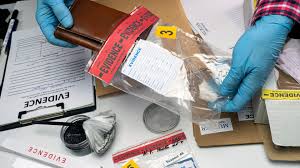When preparing for immigration to the United States, there are several steps that applicants need to complete. Among them is the tuberculosis (TB) test, which forms a key part of immigration exams. Here’s how this test is designed to help maintain public health standards by identifying individuals who may carry tuberculosis:
Why TB Testing is Required
The primary purpose of TB testing during the immigration process is to prevent the spread of tuberculosis. Tuberculosis is a communicable disease that spreads through the air. It has the potential to infect others in close contact settings. By identifying applicants who may have active TB disease or who may require further evaluation, immigration systems aim to keep communities safe.
The U.S. Centers for Disease Control and Prevention (CDC) has set specific medical guidelines for immigration-related TB testing. These guidelines determine how testing is done, make sure applicants undergo the appropriate evaluation, and recommend steps for individuals if TB is detected.
What to Expect During TB Testing
The process for TB testing includes several steps designed to screen for infection or disease in a thorough and structured manner. While these tests follow standard procedures, specifics may vary slightly. This depends on the applicant’s medical history and country of origin.
1. Initial Testing Methods
Typically, immigration exams include either a tuberculin skin test (TST) or an interferon-gamma release assay (IGRA), which is a blood test. Both methods aim to detect whether a person has been exposed to TB bacteria.
- Tuberculin Skin Test (TST): A small amount of testing liquid is injected into the skin of the forearm. After 48 to 72 hours, the injection site is examined for swelling. The size of the swelling area helps determine the results of the test.
- IGRA Blood Test: This test measures the immune system’s response to TB bacteria through a blood sample. It is a typical choice for applicants with prior TB vaccinations, as the result is not affected by having received the vaccine.
Both of these methods provide preliminary information about whether exposure to tuberculosis bacteria has taken place.
2. Advanced Screening with Chest X-rays
If the initial TB test result suggests possible exposure, the applicant may be required to complete a chest X-ray. The X-ray can help medical officers look for signs of active tuberculosis in the lungs, such as abnormalities or scarring. This is an additional step to confirm whether active disease is present. It also helps to determine whether further medical evaluation is needed.
3. Treatment for Active TB
Individuals diagnosed with active tuberculosis are usually required to undergo treatment. They must do this before they can proceed with their immigration application. This treatment is a structured process involving medications. Drugs aim to eliminate the bacteria, prevent their spread, and restore the health of the individual. Once the treatment is successfully completed and medical documents confirm the individual’s health status, they may move forward in their immigration process.
Get Immigration Exams From a Clinic Near You
TB testing for immigration may seem like one more task in an already complex process, but it is an integral step to provide seamless integration into your destination. By understanding the testing procedures and completing any required follow-ups, applicants can move through this phase of immigration. It is always helpful to schedule an appointment with a medical professional and follow their guidance to achieve the desired results.
- Preparing for Thyroid Surgery and Understanding the Recovery Process
- Understanding the Connection Between Depression and Chronic Illness
- The Role of Preventive Care in Federal Dental Coverage
- Natural Supplements for Hemorrhoid Relief
- How an Optometrist Can Help with Presbyopia and Age-Related Vision Changes


Leave a Reply